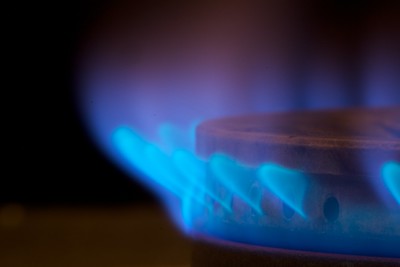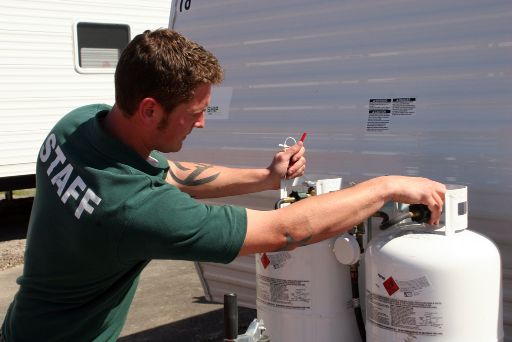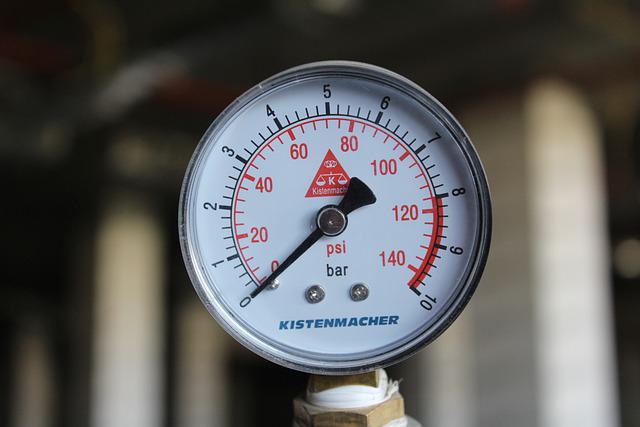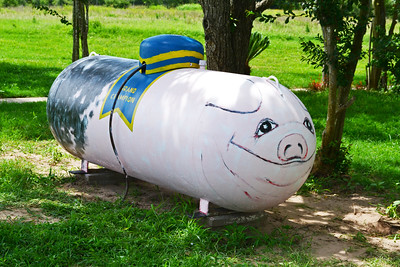
Leaving a gas stove on can cause carbon monoxide poisoning if the appliance isn’t properly ventilated. Carbon monoxide is a colorless, odorless gas that can be deadly if inhaled in large quantities. When a gas stove is used for cooking, it produces small amounts of carbon monoxide. If the stove is not vented to the outside, the carbon monoxide can build up to dangerous levels inside the home.
When a gas stove is used, it emits carbon monoxide. This gas is produced when natural gas or propane burns. . This happens because the gas stove is not burning the gas completely. When carbon monoxide is inhaled, it enters the bloodstream and prevents oxygen from being carried to the cells and tissues of the body.
Symptoms of carbon monoxide poisoning include headaches, dizziness, nausea, and shortness of breath. If you experience these symptoms while using a gas stove, open a window or door to get fresh air immediately and call your local poison control center.
How Can Leaving a Gas Stove On Cause Carbon Monoxide Poisoning?
Carbon monoxide is a toxic gas that is produced when fuels such as gas, wood, or coal are burned. It is colorless, tasteless, and odorless, which makes it difficult to detect.
If a gas stove is left on, it can produce carbon monoxide if it is not functioning properly or if it is not vented properly. In order to burn properly, gas stoves need a sufficient supply of oxygen. If there is not enough oxygen in the air, the stove will produce carbon monoxide instead of the normal products of combustion (carbon dioxide and water).
If carbon monoxide accumulates in a confined space, it can cause carbon monoxide poisoning. Carbon monoxide poisoning can cause a range of symptoms, including headache, dizziness, weakness, nausea, and chest pain. In severe cases, it can lead to coma and death.
The risk of carbon monoxide poisoning from a gas stove is particularly high if the stove is not properly vented. Gas stoves produce carbon monoxide when they burn gas, and this gas needs to be properly ventilated to the outside of the building in order to prevent it from accumulating inside. If the stove is not properly vented, the carbon monoxide can accumulate in the room, increasing the risk of poisoning.
In addition to proper ventilation, it is important to make sure that your gas stove is functioning correctly. If the stove is not functioning correctly, it may produce more carbon monoxide than normal. This can occur if the stove is not properly adjusted, if it is not properly maintained, or if there is a problem with the gas line.
To reduce the risk of carbon monoxide poisoning from a gas stove, it is important to follow these safety tips:
- Make sure that your gas stove is properly vented to the outside of the building.
- Have your gas stove inspected and serviced regularly to ensure that it is functioning correctly.
- Install carbon monoxide detectors in your home and make sure they are in good working order.
- If you suspect that there may be a problem with your gas stove, such as a gas leak or a malfunction, turn off the gas and ventilate the room immediately.
Leaving a gas stove on can be dangerous if it is not functioning properly or if it is not properly vented. Carbon monoxide poisoning can be serious and can even be deadly. By following these safety tips and being aware of the risks, you can help to protect yourself and your family from the dangers of carbon monoxide poisoning.
Gas Stoves Can Generate Unsafe Levels of CO Gas
While gas stoves are a convenient and popular cooking method, they can also generate unsafe levels of carbon monoxide. This is especially true if the stove is not properly ventilated. When carbon monoxide builds up, it can cause serious health problems, including headaches, dizziness, nausea, and even death.
To avoid these dangers, it’s important to make sure your gas stove is properly ventilated. Keep the area around the stove clear of clutter, and open a window or door while cooking to let fresh air in. If you start to feel dizzy or nauseous while cooking, get out of the kitchen immediately and seek fresh air. And if you have any concerns about the safety of your gas stove, don’t hesitate to contact a professional for help.
How Much Carbon Monoxide Does a Gas Stove Produce?
Carbon monoxide is produced when gas burns. When you use a gas stove, some of the gas doesn’t burn up completely. This produces carbon monoxide, which is a poisonous gas. The amount of carbon monoxide that a gas stove produces depends on the type of stove and how well it’s ventilated. Older stoves tend to produce more carbon monoxide than newer stoves. If your stove is properly ventilated, the amount of carbon monoxide it produces should be negligible. However, if your stove isn’t properly ventilated, it can produce harmful levels of carbon monoxide.
Most gas stoves produce about 100 to 800ppm CO when it operates when they are used to cook food. However, some newer models may produce less than half that amount. The U.S. Environmental Protection Agency (EPA) recommends that people who use gas stoves for cooking should have a carbon monoxide detector in their home.
Signs of CO Poisoning
If you experience CO poisoning, it is important to seek medical attention immediately. CO poisoning can be deadly, so it is crucial to get help as soon as possible.
If you are with someone who is experiencing CO poisoning, call 911 or your local emergency number. If you are unable to reach emergency services, try to get the person to fresh air and open all the doors and windows in the area.
Do not try to drive yourself or the person who is sick to the hospital. Get out of the area where you were exposed to CO and into fresh air immediately.CO poisoning can cause a variety of symptoms, including headache, dizziness, nausea, shortness of breath, confusion, and loss of consciousness. If you experience any of these symptoms, it is important to seek medical attention right away. CO poisoning can be difficult to diagnose, so it is important to let your healthcare provider know if you have been exposed to CO.
How Do You Know If Your Stove is Giving Off CO Gas?
If you have a gas stove, it’s important to know the signs that it may be giving off carbon monoxide. This colorless, odorless gas can be deadly if inhaled in large amounts, so it’s important to be aware of the symptoms of carbon monoxide poisoning and how to prevent it. There are a few key things to look for that may indicate your stove is giving off carbon monoxide:
- Soot or stains on or around your stove: This can be a sign that your stove isn’t burning fuel properly and as a result, is releasing carbon monoxide into the air.
- Yellow or orange flames: A healthy flame should be mostly blue with maybe a small amount of yellow at the tips. If your flames are mostly yellow or orange, this could be another sign that your stove isn’t burning fuel properly and is releasing carbon monoxide.
- condensation on the windows: If there is condensation on the windows near your stove, this could be a sign that there is too much moisture in the air and that your stove isn’t venting properly. This could also lead to carbon monoxide being released into the air.
- headaches, dizziness, nausea, shortness of breath, fatigue: These are all symptoms of carbon monoxide poisoning. If you experience any of these after being in an area near your gas stove, it’
Use CO Detector in Your Kitchen to Monitor Build Up of this Gas
If you have a gas stove in your kitchen, it’s important to monitor the level of carbon monoxide (CO) in the room. CO is a colorless, odorless gas that can be deadly if inhaled in large quantities. A CO detector will sound an alarm if the level of CO in the air gets too high.
There are two types of CO detectors: plug-in and battery-operated. Plug-in detectors need to be plugged into an outlet, while battery-operated detectors can be placed anywhere in the room. Both types of detectors should be placed near the kitchen stove, where they will be most effective at monitoring CO levels.
If you have a gas stove, it’s a good idea to get a CO detector that measures the amount of CO in the air. These detectors will sound an alarm when the level of CO rises to a certain point. If you are concerned about the possibility of carbon monoxide poisoning, you may want to get a detector that measures the amount of CO in your blood.
If your CO detector sounds an alarm, immediately open a window and leave the house. Do not turn off the detector; it will continue to sound until the CO level drops. If you have difficulty breathing, call 911.
Keep the Area Ventilated to Prevent CO build Up in the Air
It is important to keep the area ventilated to prevent carbon monoxide (CO) build up in the air. CO is a colorless, odorless gas that can be deadly if inhaled in high concentrations. There are a few things you can do to ensure proper ventilation and prevent CO buildup:
- Install a CO detector in your home and check it regularly to make sure it is working properly.-Make sure all fuel-burning appliances in your home are vented properly to the outside.
- Do not use fuel-burning appliances such as ovens, stoves, or grills indoors.
- Do not leave cars or trucks running in an attached garage, even with the door open. If you suspect that you or someone else may be suffering from CO poisoning, get fresh air immediately and call 911.
Modern Stoves and Ranges Produce None or Much Less CO Gas
As the world progresses, so does technology. More and more people are using natural gas to fuel their homes because it is a cleaner burning fossil fuel than oil or coal. However, with the old technology, gas stoves used to produce a lot of carbon monoxide gas (CO).Nowadays, with the new and improved modern gas stoves, very little to no CO is produced. This is great news for those who want to help reduce their carbon footprint and do their part in saving the environment. Not to mention, it is also much safer for you and your family as carbon monoxide poisoning can be fatal.
Dangers of Leaving Stove On
Leaving the stove on can be dangerous for a number of reasons. Here are a few potential dangers to consider:
- Fire risk: If you leave the stove on and unattended, there is a risk of a fire starting. This could be due to food or other materials catching fire, or due to the stove malfunctioning.
- Carbon monoxide risk: Some stoves, particularly gas stoves, can produce carbon monoxide if they are not functioning properly or if they are not vented properly. Carbon monoxide is a toxic gas that can cause serious health problems, including death, if it accumulates in a confined space.
- Burns and scalds: If you leave the stove on, there is a risk of burns or scalds if someone accidentally touches the burner or a hot pan on the stove.
- Gas leaks: If you have a gas stove and you leave it on, there is a risk of a gas leak, which could lead to an explosion or fire.
It is important to be cautious when using the stove and to make sure it is turned off when it is not in use. It is also a good idea to have working smoke and carbon monoxide detectors in your home to alert you if there is a fire or gas leak.
To Make a Conclusion
Leaving a gas stove on can definitely cause carbon monoxide poisoning. In fact, it’s one of the most common ways that people are poisoned by this deadly gas. When you leave a gas stove on, the flame that’s burning the gas produces carbon monoxide. This gas is odorless and colorless, so you can’t see or smell it. And it’s very dangerous because it can quickly build up in enclosed spaces and poison people who are breathing it in. So if you’re using a gas stove, make sure to turn it off when you’re done cooking. And if you think there might be a problem with your stove, like if it’s not venting properly, get out of the house and call a professional to check it out.

Mike is an experienced propane technician with over 15 years of professional experience in the field. He has dedicated his career to helping customers with their propane needs, from installation to maintenance and repair. Together with Jeremy, he co-founded this website to provide useful information and guidance to customers seeking reliable propane services.



